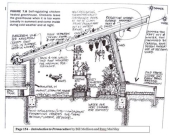




Community Building 2.0: ask me about drL, the rotational-mob-grazing format for human interactions.




Visit Redhawk's soil series: https://permies.com/wiki/redhawk-soil
How permies.com works: https://permies.com/wiki/34193/permies-works-links-threads





 1
1




Community Building 2.0: ask me about drL, the rotational-mob-grazing format for human interactions.




I make a Maple Syrup instructional movie! Check it out HERE
SKIP books, get 'em while they're hot!!! Skills to Inherit Property
See me in a movie building a massive wood staircase:Low Tech Lab Movie
 3
3




A build too cool to miss:Mike's GreenhouseA great example:Joseph's Garden
All the soil info you'll ever need:
Redhawk's excellent soil-building series





 1
1




I make a Maple Syrup instructional movie! Check it out HERE
SKIP books, get 'em while they're hot!!! Skills to Inherit Property
See me in a movie building a massive wood staircase:Low Tech Lab Movie
 1
1









 1
1




Jay Angler wrote:Knowing what I know about chickens:
1. they'll dig at the base of the walls if you don't have some sort of edging to prevent that.
2. you'd need a series of 5-7 of them so that you could rotate the chickens while the bugs moved up and multiplied to eat the shit left behind
3. are you thinking of digging down in your climate for cool, heat or predator protection? (I'm not so good with US climate extremes) What wouldn't work with just 5-7 above-ground runs that the chickens would rotate through?
Community Building 2.0: ask me about drL, the rotational-mob-grazing format for human interactions.









William Bronson wrote:I think this could be really good.
If the hole had different levels like an inverted step pyramid that could be used to separate the chickens from any growing thing.
Build a 4' tall fence out of pallets.
Lay poly out around the perimeter of the fence, secure with stones
Inside that dig a two foot deep pit with a second one foot deep pit in the center of that.
Deposit the soil right outside the fence,atop the poly as a berm.
Fill in the deepest pit with wood chips or autumn leaves as a very deep bedding and source of bugs.
With the lowest pit filled in, put a 4' foot fence around this mulch pit and plant Austrian Winter peas and/or Fava beans around the perimeter.
I think these would be good fodder and should grow during winter in a warm enough greenhouse.
Cap this pit with double layer poly with a curved or peaked shape, to shed snow.
Continue the poly out over the berm, to keep the soil dry.
I like to let my hens rest during the short days of winter, but a solar powered light might keep them laying.
Community Building 2.0: ask me about drL, the rotational-mob-grazing format for human interactions.

|
Laborare non amo - latin for "I do not like to work" - thanks tiny ad
The new permaculture playing cards kickstarter is now live!
https://www.kickstarter.com/projects/paulwheaton/garden-cards
|





